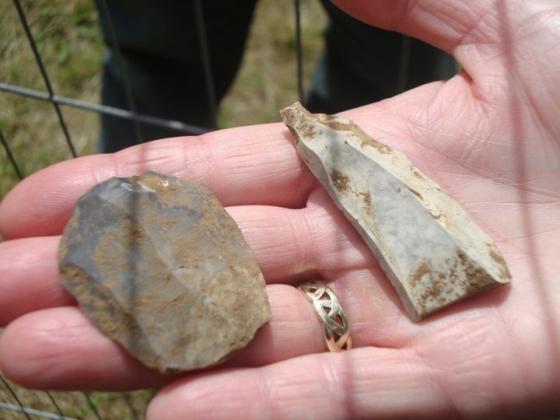Field Notes
Barrow Copse Long Barrow, West Woods – April 20th 2008
Ordnance Survey Explorer Map 157 – Scale 1:25000
Marlborough and Savernake Forest Avebury and Devizes
ISBN 978-0-319-23611-6
I first visited this long barrow back in 1988 when we were updating the County’s SMR records. It lies on the edge of a wood or collection of separate pieces of woodland called West Woods. The area was once part of the Savernake Forest, but is now owned by the Forestry Commission.
West Woods is designated access land under the Countryside and Rights of way act 2000. See www.countrysideaccess.go.uk for all the details of these rights.
West Woods is well sign posted and has two car parks, one with a picnic area at SU 16250 66703. This is nearer to the long barrow when you travel up from the A4 and Clatford Bottom. The northern car park at SU 13257 66323, is at the top of the road from Lockerage Dean. If you park here, be prepared for a long, uphill walk into the western side of the wood and along the Wansdyke. This area of the woods has some of the oldest trees, particularly Oaks. When you reach the point that the Wansdyke turns directly into the woods, follow the track to the right and keep to the edge of the wood. The barrow lies just off the track, on the left.
When we visited back in 1988, we came along the track via the byway from Clatford Bottom, which skirts the southern edge of West Woods and the Wansdyke. The barrow seemed to have more oak trees growing over it back then, but little else seems changed. Although it stands on a slight rise, the features of this barrow are difficult to discern, for it is covered both by trees and by a carpet of bluebells.
Both the Ordnance Survey in 1815, (2-inch map) and Colt Hoare in 1821 (map of Marlborough station) depict it as a round barrow. A.C. Smith in 1885 and Goddard in 1913 recorded it as a ‘bowl-shaped’ barrow but it was not until 1923 the A.D. Passmore finally recognized it as a short long barrow, oriented E-W. He gives it dimensions as Length l20 ft, width 66 ft, and 10ft. high. The side ditches, which do not continue round the ends, were then 4ft. deep and 18ft. wide.
The disturbance resulting from the excavation of Sir Henry Meux in about 1880 is still evident; at the top centre of the barrow there is a small depression with a shallow cutting leading from this to the N edge of the mound. A.D. Passmore spoke to Mr. S. Hilliard, the chief woodman, who told him Meux employee six men (of whom he was one) to open the mound.
A trench was cut from the south side into what was thought to be the centre of the tumulus. At this point a small cairn of small sarsen stones was reached. In the centre of this was a dolmen consisting of four upright stones (the spaces between which were packed with large flints) and a capstone covering them, all of sarsen. The large top stone was levered off, as much as the six men could move and the inside was found to contain certain black matter, Mr. Hilliard was unable to say of what nature. He did not see any bones or pottery. The inside of the dolmen was about 6ft. by 3ft., its longer axis coinciding with that of the barrow. As it contained no relics it was left undisturbed, with the capstone replaced in its old position, and the excavation filled in.
When we examined the barrow, it was recorded as 38.0 m long with a maximum width of 30.0 m; being slightly higher at the E end, where it reaches 3.3 m. Well-defined but heavily silted ditches (9.0 m wide, 1.1m deep) flank both sides, and a ditch at the E end (0.5 m deep) is separated from the side-ditches by narrow causeways.
As the barrow has never been properly excavated, further detailed is examination is required to determine whether the central megalithic chamber, perhaps with intact tilling, is the only one within the mound, and whether it ever had a passage allowing repeated access. Side chambers may also have been constructed and lie undisturbed. Passmore muses that although exhibiting features which proclaim it to be a long barrow, this mound may, perhaps, more truly be called an oval mound of a transitional period, the stone chamber in the middle being unusual.










































































































































































